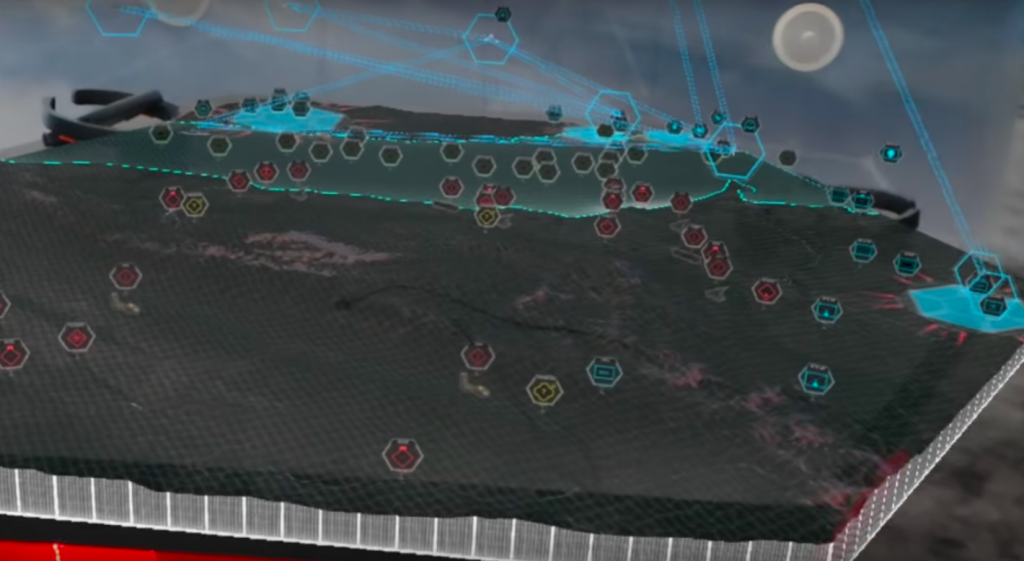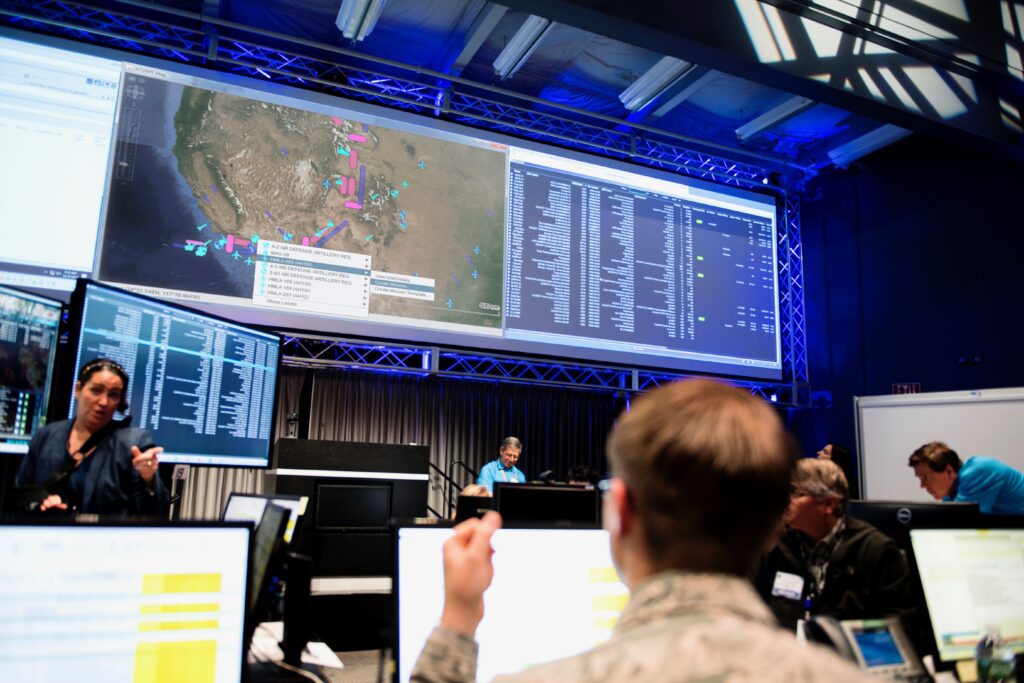
Raytheon Multi-Domain Command & Control (MDC2) concept
CORRECTED: To reflect that the name of the first JADC2 exercise is ABMS Onramp not Cross Domain One. UPDATED: To include new information about “dataONE” and “crossDomainONE” products under ABMS.
SANTA MONICA: The Air Force will lead the first experiment of Joint All-Domain Command and Control (JADC2) capabilities in two weeks, tying fighter jets to Army ground systems and Navy ships in a real-world example of Multi-Domain Operations.
Preston Dunlap, Air Force chief architect for acquisition, told Breaking D that the exercise in Florida will “be powered by” the service’s nascent Advanced Battle Management System (ABMS).
The Army is contributing Long-Range Army Precision Fires (i.e. missiles), troops on the ground, and Sentinel radar. The Navy is bringing F-35Cs and a destroyer; and the Air Force will bring F-22 and F-35 fighter jets. In addition, he said, certain “innovative” vendors will be providing “new technologies” to help the various platforms connect. “We’re going to bring all that together for the first time and share data,” he said.
Rather than an experiment or exercise, Dunlap said he preferred to call the event the first of hopefully many “on-ramps” for achieving JADC2 capability.
Speaking here today at RAND’s 5th Annual West Coast Aerospace Forum, Dunlap said the exercise is called Corrected: “ABMS Onramp” and that it is the first in the Air Force’s planned four-month cycle of ABMS development that acquisition czar Will Roper told Breaking D about back in September.

Lockheed Martin’s third Multi-Domain Command & Control (MDC2) wargame
As Breaking D readers know, the Air Force was tapped by the Joint Requirements Oversight Council (JROC) this summer to lead the JADC2 exercises, and to undertake technology experiments within its Shadow Operations Center — now designated a joint center — at Nellis Air Force Base in Nevada.
Further, ABMS is being designed with an open systems architecture and software standards so that all the services can eventually link into the system as it develops, Brig. Gen. David Kumashiro stressed during the panel discussion.
“ABMS is not an Air Force proprietary system,” he said. Kumashiro also noted that the Air Force is in the midst of developing its cloud-based Unified Data Library (UDL) that is open not only to other services but to US allies and partners, as well as industry. The goal of the UDL is to create a data repository — first focused on space situational awareness (SSA) data but eventually to be built out.
Update begins: The ABMS Onramp exercise will be testing the UDL’s successor, called “dataONE,” that eventually will leverage not only UDL but also an array of other systems and sensors across all the domains, an Air Force spokesperson told Breaking D. Meanwhile, “crossDomainONE is being developed to “seamlessly and securely move data up and down security classification boundaries,” the spokesperson said. It will be exercised in future iterations of ABMS Onramp. Update ends.






















